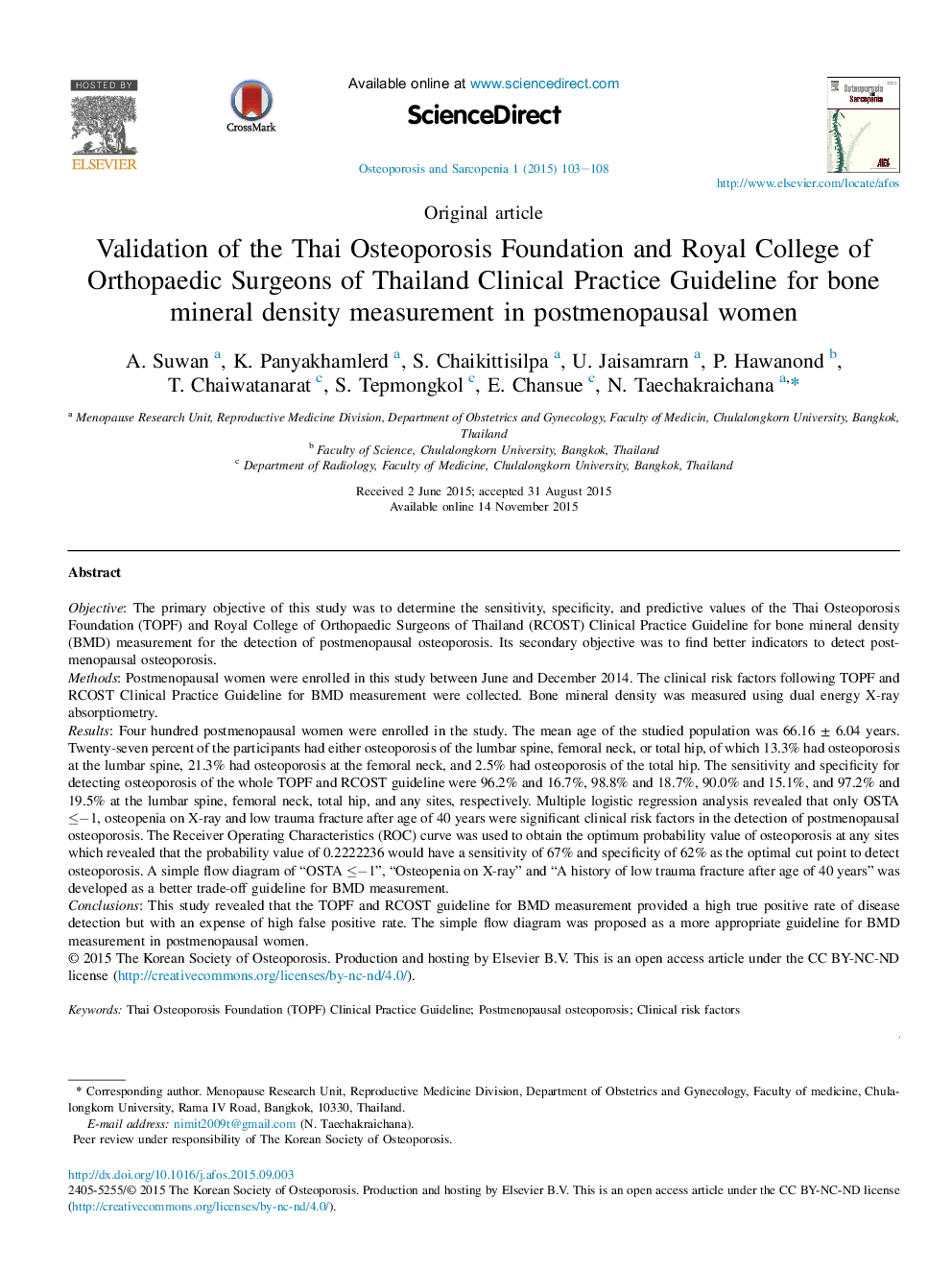| Article ID | Journal | Published Year | Pages | File Type |
|---|---|---|---|---|
| 3277916 | Osteoporosis and Sarcopenia | 2015 | 6 Pages |
ObjectiveThe primary objective of this study was to determine the sensitivity, specificity, and predictive values of the Thai Osteoporosis Foundation (TOPF) and Royal College of Orthopaedic Surgeons of Thailand (RCOST) Clinical Practice Guideline for bone mineral density (BMD) measurement for the detection of postmenopausal osteoporosis. Its secondary objective was to find better indicators to detect postmenopausal osteoporosis.MethodsPostmenopausal women were enrolled in this study between June and December 2014. The clinical risk factors following TOPF and RCOST Clinical Practice Guideline for BMD measurement were collected. Bone mineral density was measured using dual energy X-ray absorptiometry.ResultsFour hundred postmenopausal women were enrolled in the study. The mean age of the studied population was 66.16 ± 6.04 years. Twenty-seven percent of the participants had either osteoporosis of the lumbar spine, femoral neck, or total hip, of which 13.3% had osteoporosis at the lumbar spine, 21.3% had osteoporosis at the femoral neck, and 2.5% had osteoporosis of the total hip. The sensitivity and specificity for detecting osteoporosis of the whole TOPF and RCOST guideline were 96.2% and 16.7%, 98.8% and 18.7%, 90.0% and 15.1%, and 97.2% and 19.5% at the lumbar spine, femoral neck, total hip, and any sites, respectively. Multiple logistic regression analysis revealed that only OSTA ≤−1, osteopenia on X-ray and low trauma fracture after age of 40 years were significant clinical risk factors in the detection of postmenopausal osteoporosis. The Receiver Operating Characteristics (ROC) curve was used to obtain the optimum probability value of osteoporosis at any sites which revealed that the probability value of 0.2222236 would have a sensitivity of 67% and specificity of 62% as the optimal cut point to detect osteoporosis. A simple flow diagram of “OSTA ≤−1”, “Osteopenia on X-ray” and “A history of low trauma fracture after age of 40 years” was developed as a better trade-off guideline for BMD measurement.ConclusionsThis study revealed that the TOPF and RCOST guideline for BMD measurement provided a high true positive rate of disease detection but with an expense of high false positive rate. The simple flow diagram was proposed as a more appropriate guideline for BMD measurement in postmenopausal women.
